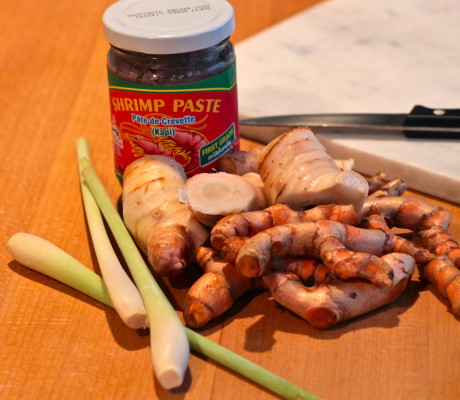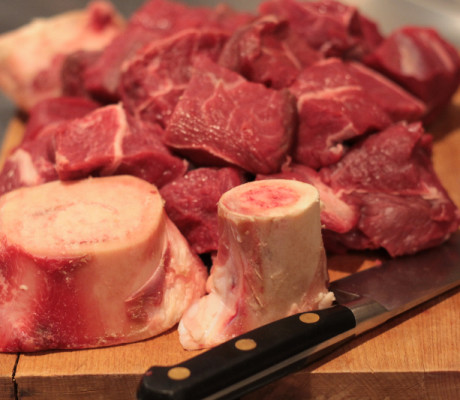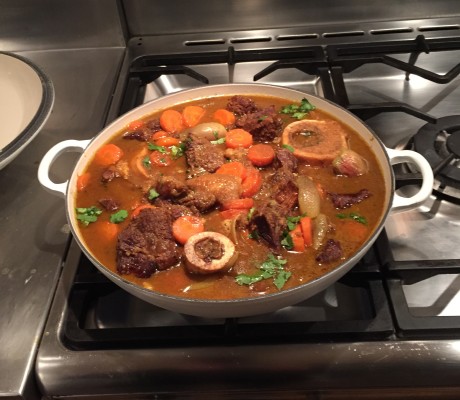


The cuisine of Southeast Asia is very vibrant and aromatic. It is lighter and leaner than Chinese cooking, with an emphasis on citrusy flavors and fresh spices and herbs. This recipe will most likely require a trip to an Asian grocery store – but once you have assembled the ingredients, putting it together is surprisingly quick. And, good news, most of the fresh ingredients that you will need to pick up at the Thai or Chinese grocers either last for a long time or freeze well so you can always have a supply on hand.
This is a short list of the ingredients you may be unfamiliar with in this recipe:
Turmeric: Most of you will have used turmeric in its powder form, but fresh turmeric is preferred in Southeast Asian cuisine. Fresh turmeric is a rhizome, (a creeping root stalk) smaller and thinner than fresh ginger. The fresh root has a delicate, earthy flavor with some citrusy notes and just a hint of the bitterness I often associate with powdered turmeric. When peeled it reveals its amazing bright orange-yellow flesh and heady fragrance. Turmeric root needs to be peeled, then it can be cut into matchsticks, grated with a micro plane or even juiced. Fresh turmeric is also good for you; prized for its anti-inflammatory and healing properties. However, be warned, turmeric’s loud color gives everything it touches a warm yellow hue – great for stews and other foods, not so good for hands and clothes – so take care when using. (A little lemon juice will remove most turmeric stains.)
Galangal: Fresh galangal is another aromatic rhizome. Its flavor is often compared to ginger but with lemony overtones and a bit of cardamom mixed in. It is sold as a large knobby root and has a pinkish cream color. It should be peeled before being used.
When buying fresh galangal and turmeric look for firm, unwrinkled roots. Fresh roots will keep for 2 weeks in the fridge, or can be frozen.
Shrimp paste: Made from fermented shrimp, fish and krill, this is a basic condiment added to almost every Southeast Asian dish. The raw paste is very smelly, but its not meant to be used on its own. Its strong fish smell magically disappears when cooked. Added to stews and curries it imparts complexity and depth without masking other flavors. Each Southeast Asian country produces its own version and it will vary in color and strength depending on where it is made. Shrimp paste is known as kapi in Thailand, terasi in Indonesia and belacon in Malaysia. The paste is sold wet in a jar or as a dried block. The wet paste is stronger but easier to use as it can just be spooned into whatever you are cooking. The dried block needs to be roasted before using, but will keep indefi nitely.
Kaffir lime leaves: These fragrant, dark green leaves have a delicious citrus flavor. They can be used whole, or removed from the central stalk and thinly sliced. I always keep a package in my freezer.
Lemongrass: These grassy stalks have an intense lemon flavor. Peel off the tough outer leaves to expose the tender thick bulb of the stem that can be chopped, smashed or sliced.
A word about the beef…
In France, my favorite cut of beef for braising or making stews is a small roast that sits between the shoulder blade and the neck and called the paleron. French and beef cuts in other countries do not exactly line up. Elsewhere, similar cuts might be known as an upper blade roast, top blade roast or chuck. It looks like two long, flat steaks sandwiching a layer of connective tissue, which is the beauty of this cut. As the meat cooks in a slow braise, the connective tissue converts into gelatin, giving the dish a lot of flavor and a wonderful tender texture. The marrowbones contribute to the gelatinous quality of the stew and the silky texture of the sauce as well as adding a lot of healthy goodness.
Ingredients
Instructions